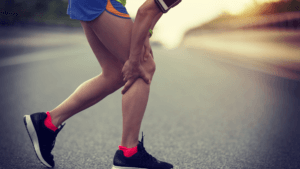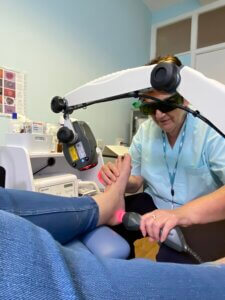What Is Pain?
The what, why, when and ways of pain.
What
When there is damage to your body, signals are sent to the brain to tell you to react and protect yourself. Everyone feels pain differently, which is why it isn't easy to define. There is a scale of pain from sore, ache, tender, sting, and sharp to agony, torment and excruciating.
Pain can be localised to an area if you've burnt yourself or generalised life when you have the flu.

Why
As health professionals, we talk about acute and chronic pain.
Acute pain is caused by something specific and comes on suddenly. Examples of acute pain are broken bones, surgery, burns and childbirth. Acute pain will go once the underlying cause has healed and usually lasts less than six months. Once it has gone, life can carry on as usual.
Chronic pain comes from an illness or injury; it can continue for years. Examples of chronic pain are arthritis, back and neck pain and fibromyalgia. Chronic pain can really affect the quality of life; it can contribute to depression, lack of energy, anxiety and mobility problems.
There is another type of pain which podiatrists are often involved with; the care of neuropathic pain. This results from nerve damage; we see this with our patients with diabetes. They feel a stabbing, shooting or prickly sensation.
When
We are so fortunate to live now and have  access to paracetamol, ibuprofen, and morphine. These all mask the pain so that we can still function, but you need to remember your body is telling you about the pain to protect the injured area. You need to listen and look after yourself. If the pain is from an injury or fall, you need to rest, ice, compress and elevate the area as much as you can. You may need a trip to A&E to check if anything is broken, and if the pain continues for more than 2-3 days; get in touch with your GP. People suffering from chronic pain will already have a medical professional advising them on the specific treatment.
access to paracetamol, ibuprofen, and morphine. These all mask the pain so that we can still function, but you need to remember your body is telling you about the pain to protect the injured area. You need to listen and look after yourself. If the pain is from an injury or fall, you need to rest, ice, compress and elevate the area as much as you can. You may need a trip to A&E to check if anything is broken, and if the pain continues for more than 2-3 days; get in touch with your GP. People suffering from chronic pain will already have a medical professional advising them on the specific treatment.
If you have inflammation, swelling and pain in your feet, ankles, knees, legs or hands, then get in contact. I have Galileo, a laser treatment machine. I kept seeing patients in the clinic who needed a little boost with their healing, which is the ideal treatment.
Laser treatment is only 10-15 minutes long; most people need 2-3 treatments a week, depending on the condition. Although, most people feel improvements straight after the first treatment, 85-90% of people report significant relief from the pain after laser treatment.
Laser can be used on acute and chronic conditions; I also use it on my ingrown toenail surgery patients to speed up the healing. You can read more about Galileo on my dedicated blog.
Don't waste days, weeks or months waiting to recover; book in for laser treatment and get back to doing what you love.